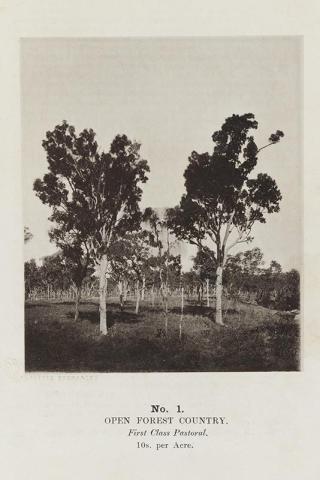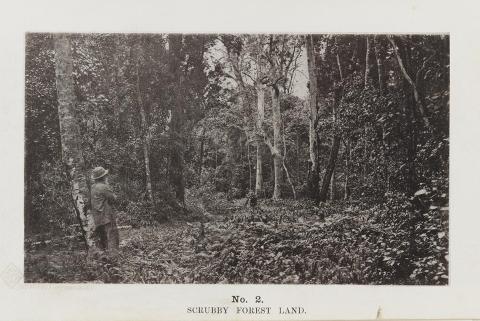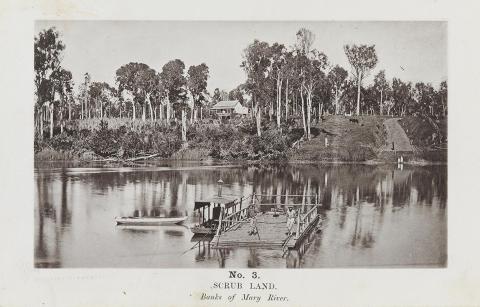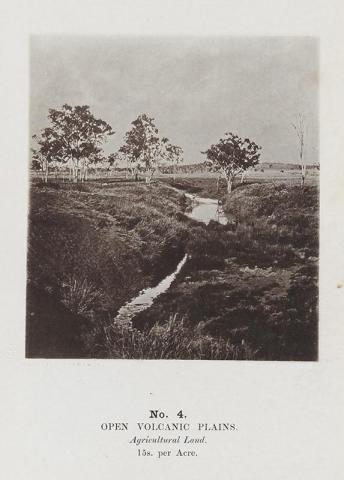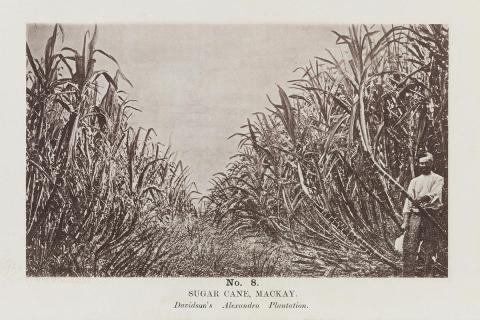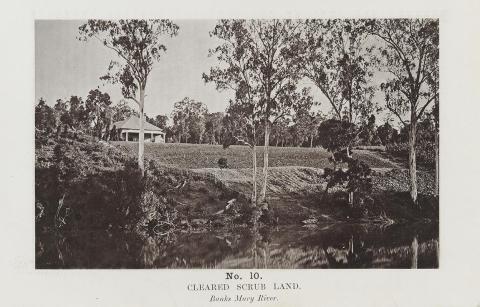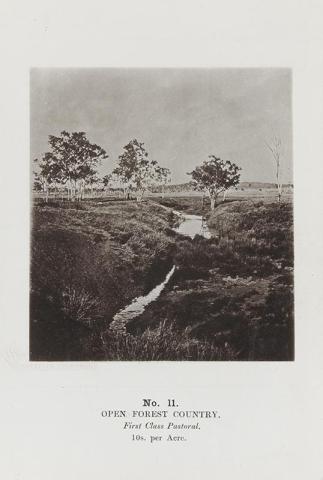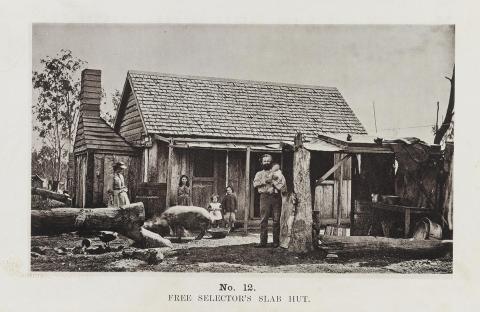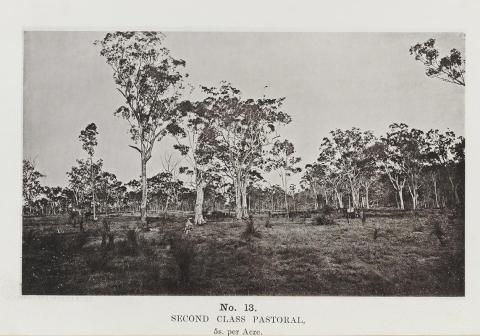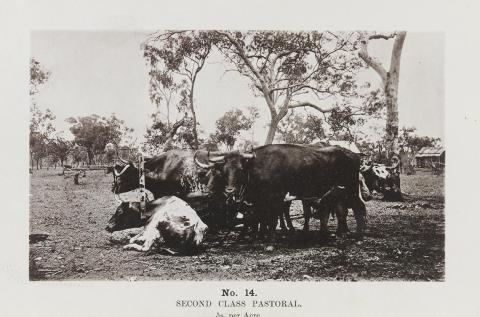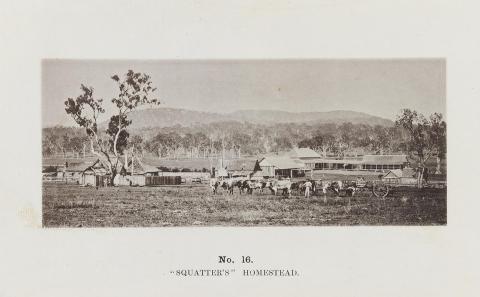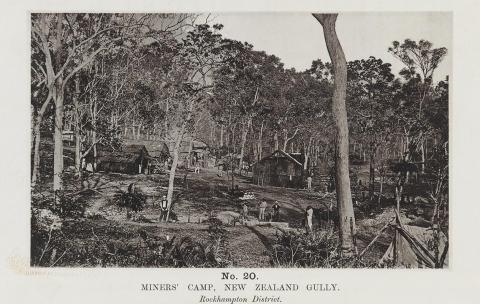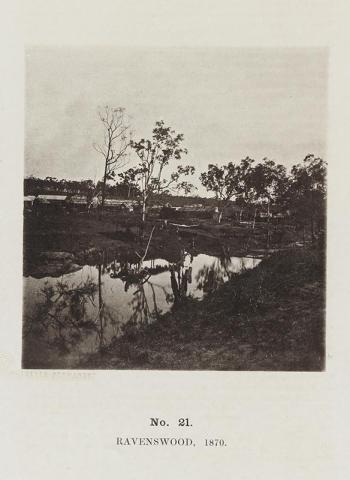LABEL: ‘Images of Queensland’ DAINTREE
By Michael Hawker
November 2022
In 1870, the commissioners of the International Exhibition of Arts and Industries — held annually in London from 1871 to 1874 — invited the Queensland government to participate in the fair. After a series of miscommunications, it transpired that:
the fine arts, the scientific inventions, and the manufacturers of this colony will be represented . . . by only a single exhibit: ‘an inlaid writing-case by Peter Brown, of St. Helena’.
Last-minute negotiations resulted in the Exhibition’s organisers accepting a series of photographs by Richard Daintree for display, along with a related collection of geological specimens that the photographer (who was also the Queensland Government Geologist) had assembled from across the state. Daintree survived a shipwreck on his voyage to England, losing all but his glass-plate negatives. The exhibit that he mounted following his arrival — including hand-coloured versions of these images — was hailed as a success, and he was given responsibility for supervising Queensland’s contribution to subsequent Exhibitions.
Connected objects
Metadata, copyright and sharing information
About this story
- Subject
